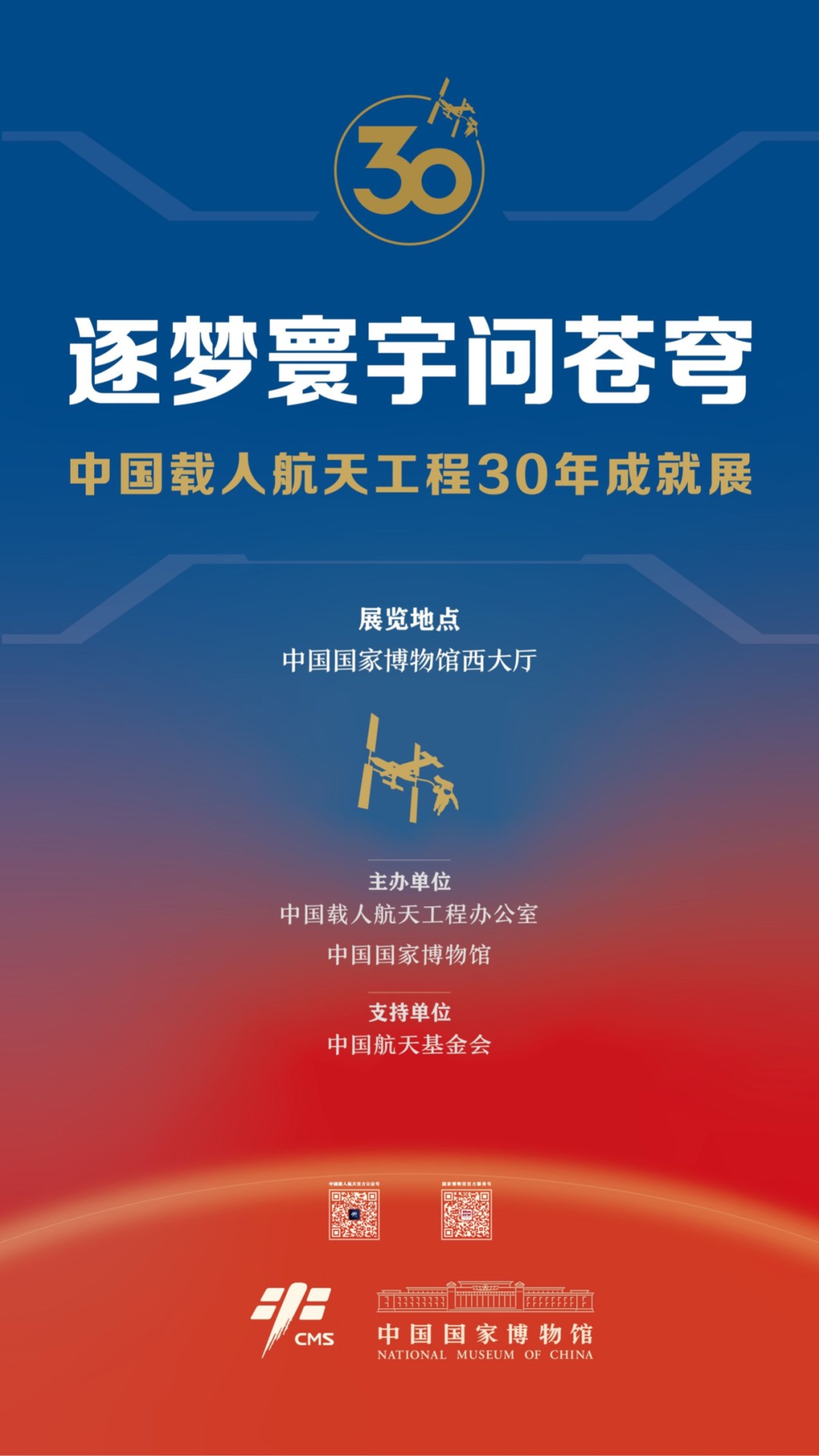On February 24, the 30-year achievement exhibition of China’s manned spaceflight project “Chasing Dreams, Universe and Sky” was held at the National Museum. Each exhibit in the exhibition hall is the imprint of China’s manned spaceflight pursuit of excellence and continuous innovation. At the Achievement Exhibition, these exhibits were continuously recorded by the audience with cameras, took group photos, uploaded and shared them. Many viewers not only watch “lively”, but also look at the doorway inside.
Stop at the Chinese space station model
See the Heavenly Palace Dream is close at hand
When you come to the center of the exhibition area, you will see the models of Tiangong Space Station and Tianhe Core Module.
The on-site audience who are going to visit the interior of the core cabin model has already lined up a long line. As the management and control center of the Chinese space station, the Tianhe core module is also the main place for astronauts to work and live in orbit. ability.
In the core cabin model of the exhibition, the sleeping bags used by the astronauts when resting, the food placed in the dining area and other details are at your fingertips. The cabin configuration and other areas such as the working area, sleeping area, dining area, and exercise area It is clearly visible and feasts the eyes of the audience.
In the exhibition, the model of the Chinese space station visible from the head attracted the attention of the audience. On the ground, scientific researchers can monitor the status of the space station in space through the digital space station, the “twin brother” of the space station, to ensure the safe and stable operation of the space station in orbit for a long time.
Stop at the exhibition area of regenerative environmental control and life protection system
Look at the magic weapon for astronauts to stay safely for a long time
On the opposite side of the space station model, you can see the regenerative environmental control and life protection system exhibition area.
Exhibits such as the carbon dioxide removal device and the trace harmful gas removal device on display at the scene attracted many audiences to stop, and everyone was very interested in the secrets behind the comfortable life of astronauts in space. Behind the long-term safe stay of astronauts is a complex system called regenerative environmental control and life protection, which allows the Chinese space station to realize the recycling of astronauts’ in-orbit environmental resources for the first time.
Including the regeneration of water and oxygen, the collection, concentration, and reduction of carbon dioxide, etc., are almost completed at one time in the Chinese space station, especially in urine treatment and water treatment, some of which have reached the international leading level.
For example, in the entire environmental control and life support system, how to convert urine into drinking water is a difficult problem. Within 5 years, the designer adjusted and optimized the plan, added components to remove impurities, realized the long-term operation of the equipment, and solved the water problem. It took another two years to ensure the recycling of gas resources.
Stop Space Application Exhibition Area
See upgradeable space lab
What exactly can be done in the space station? At the exhibition site, the exhibits in the space application exhibition area made everyone very curious.
At present, there are 16 scientific experiment cabinets in the Chinese space station. They can not only explore the basic laws of cosmic particle activities, but also help us understand the difference between the flowering and fruiting of plants in space and the ground.
These cabinets are actually replaceable. The contents and scientific devices in the cabinets can be replaced according to different research objects and goals. It is expected that there will be thousands of project applications in the future. In addition, the innovative design allows the Chinese space station itself to rely on astronauts for “metabolism” like organic life.
In the Chinese space station, many key devices have double or even triple backups to ensure the safe, stable operation and maintainability of the space station. The three-machine split structure is to meet the needs of the space station for orbital maintenance. Astronauts can replace any single machine on-orbit without affecting the execution of the mission.
As China’s first space station, the current three-chamber configuration is only the basic form, and it can be further expanded in the future to form a space homeport mode unique to China’s space station, with the space station as the core, and even the accompanying flight mode, constantly Improve China’s space exploration capabilities.
Stop at the Manned Lunar Exploration Exhibition Area
See follow-up space exploration program
At the exhibition site, models including a new generation of manned spaceships and lunar landers were exhibited for the first time, which will take Chinese astronauts to farther places. It has also become more and more clear.
The current manned spaceflight project has entered a new historical starting point, and the two major tasks of space station application and development and manned lunar exploration will be implemented in the future. According to the plan, the development and construction tasks of the lunar landing phase will be fully implemented this year.
How big is the thrust of the rocket, and how big is the stage for China’s manned spaceflight. At present, the Long March 5B carrier rocket has sent three 20-ton space station modules into orbit, the Long March 2F carrier rocket transports two crews of astronauts into the space station every year, and the Long March 7 carrier rocket will lift One or two cargo spacecraft lift off to deliver supplies to the astronauts. Next, the Long March 10 carrier rocket for manned lunar exploration will soon join it, and a new generation of manned spacecraft and lunar landers and other spacecraft will also show their talents in the near future.
The public has gone from watching “lively” to understanding the way. Behind it is the 30-year exploration and innovation of China’s manned spaceflight project, especially the rapid development of the new era in the past decade. At present, “Chasing Dreams in the Universe and Asking the Sky—Exhibition of Thirty Years of Achievements in China’s Manned Spaceflight Engineering” has been launched at the National Museum of China. Manned spaceflight enthusiasts are welcome to make an appointment to visit!
Part of the material source/China Central Radio and Television
Part of the pictures provided/National Museum, China Aerospace News Sudong
(WeChat public account of China Manned Spaceflight)
[
责编:徐皓 ]

